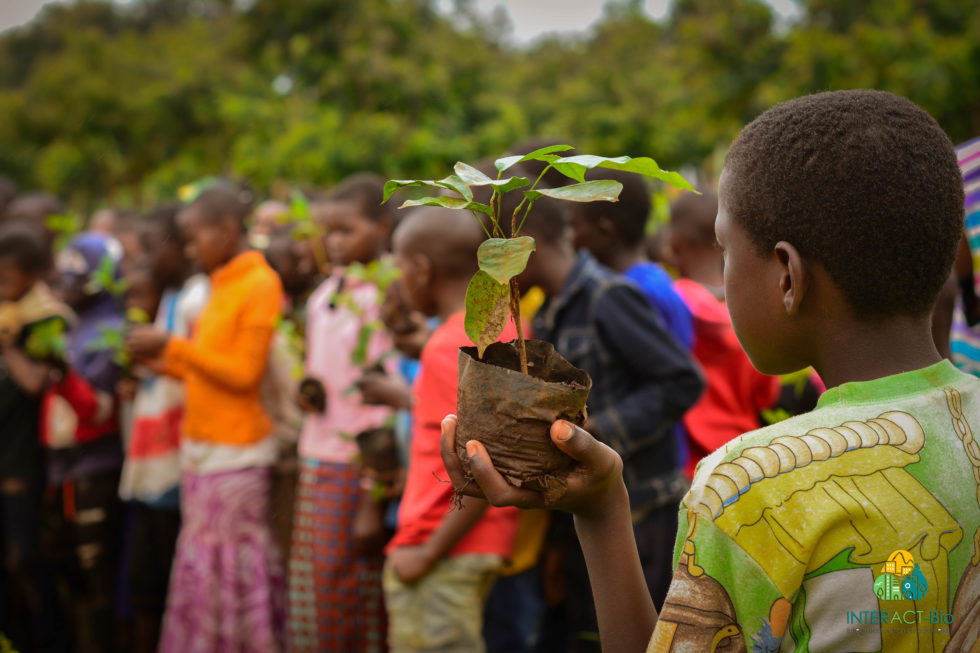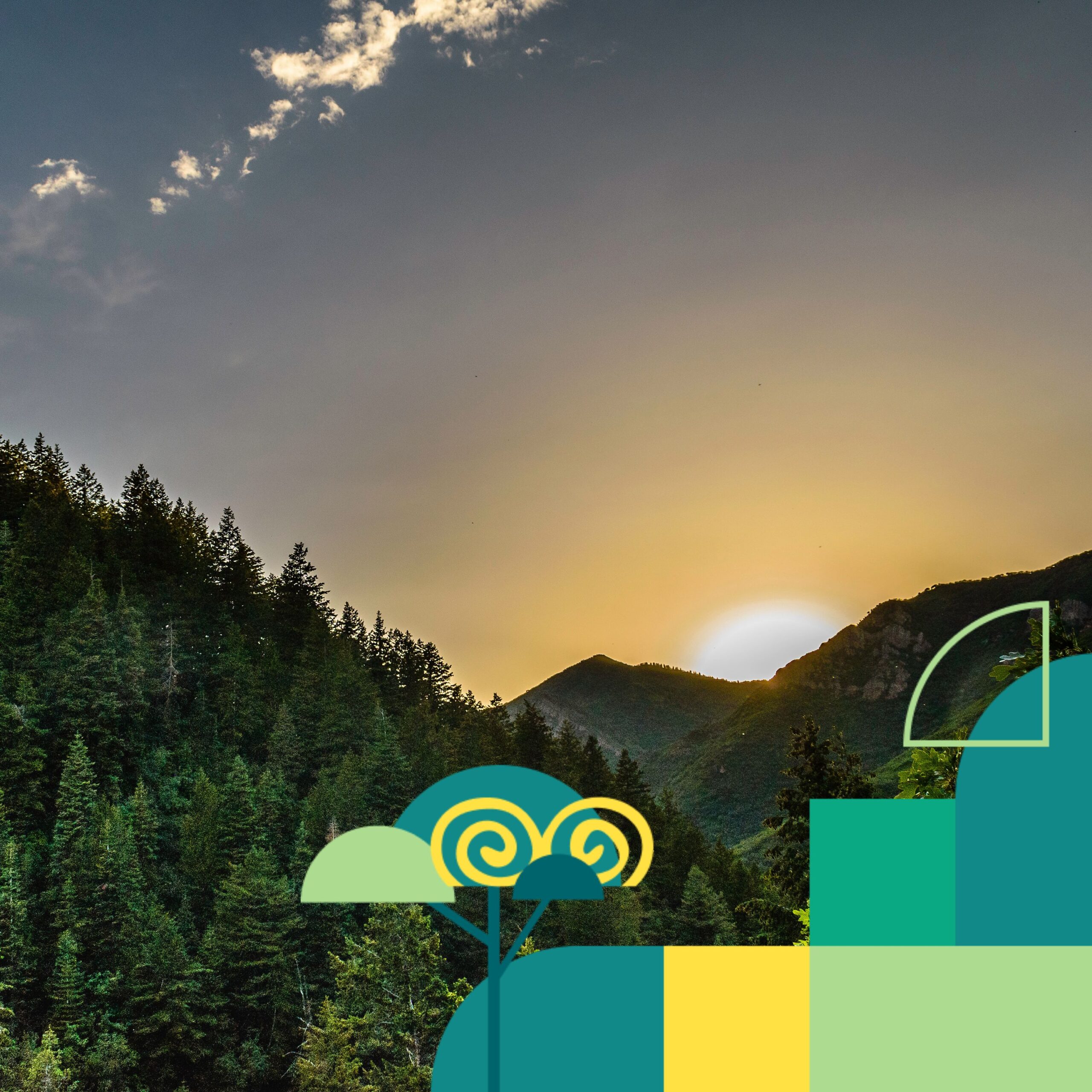20 April 2020
Growing a healthy planet: Ten tips for planting the right trees in the right places
There has never been a more important time to invest in nature. Green cities are healthy cities that are resilient to future shocks – some of which will be unexpected. We know with certainty that planting trees is a good investment. But it’s crucial to do it right, as ill-considered tree-planting could do more harm than good.



A tree is a symbol the world over, representing nature and its value, and for good reason. Taking advantage of the benefits offered by trees is crucial as cities grow and climate change impacts intensify. Numerous studies provide unequivocal evidence of the benefits of trees in addressing these impacts, which threaten to undermine the development gains achieved since the industrial revolution.
Trees have climate change-tackling super powers. Planting trees combats deforestation, which contributes 13% to total human-caused CO2 emissions, which in turn cause climate change. And they reduce temperatures and flooding impacts, vital in a warmer world, where more intense and frequent storms occur.
An article published in Science in July 2019 stated that the earth is capable of supporting an extra 900-million trees. Major reforestation projects ensued, with large amounts of money streaming in from development funds and the private sector to restore land and plant trees across the planet.
This is great news in our current climate where urban residents are realising the importance of nature, not only for their personal health and wellbeing, but also for that of their cities. The Nature Conservancy did a global analysis of the effects of trees on air quality and heat in 245 of the world’s largest cities, and found that urban tree planting efforts could improve the health of urban citizens in a cost-effective way. Trees and green spaces also contribute to more resilient social-ecological systems.
The United Nations declared 2021-2030 the Decade on Ecosystem Restoration, with one of the goals being to reforest an area as large as India (350m hectares) by 2030. India itself has pledged to plant 13m hectares of forest by 2020, Latin America is aiming at 20m hectares and African countries 100m hectares by 2030, The Guardian reports.
However, some experts have expressed concern. According to Sally Archibald, an associate professor at the University of the Witwatersrand in South Africa and expert in African grasslands, unsolicited tree-planting in these areas could be a disaster. “Just because trees can grow on a patch of land, does not mean that trees should grow there,” she told the Mail & Guardian. Archibald and several other African scientists argue that in many cases, grassy biomes might in fact be more effective in storing carbon than forests would be, if planted here.
The World Resource Institute estimates that land restoration can reverse the effects of the degradation challenges currently faced by 3 billion people around the world. Yet they admit it’s a challenge to prepare, implement and monitor appropriate projects. This is why they put together a series of resources for successful reforestation and land restoration.
Globally, cities are committing to prioritise nature, on platforms such as CitiesWithNature, which inspires cities to protect their parks and trees, and share their experience, best practices and solutions for mainstreaming nature, with cities globally.
Our urban biodiversity experts from the ICLEI Cities Biodiversity Center, working on the INTERACT-Bio and UNA Rivers projects, provide ten do’s and don’ts for planting the right tree in any location.
1. DO: Plant productive trees
Plant trees that provide more than one service. Fruit trees provide a cash crop and increase food security while simultaneously attracting important animal species like pollinators, which are vital for our survival. Ishpingo, an organisation working in Brazil, is reforesting the town of Tena in the Amazon with fruit trees, not only because fruit trees thrive in the tropics, but also because they provide food and cash crops to the community.
Similarly, trees with broad leaves and a bushy canopy can intercept rainwater and flooding in areas where this is common, and increasing greenery in built-up areas can reduce the urban heat island effect.
2. DON’T: Plant invasive species, but carefully consider exotics
Indigenous trees are mostly considered the best option for reforestation, but exotic trees can also serve an important purpose, for example when planted for firewood production. An exotic tree becomes an invasive tree when it spreads unaided, jeopardising the natural vegetation. Most countries have legislation on trees that are exotic and invasive, so be sure to review this. The Global Invasive Species Programme is another good resource.
Always consider the environment the tree is going to be planted in. Indigenous trees thrive in areas where they belong, so make sure to plant the right tree in the right location.
3. DO: Consider the root systems of trees
Solid root systems protect the soil, stop erosion, and can absorb water from rains and floods. The root systems also provide trees with stability and anchorage and enable storage of vital food reserves. However, trees with aggressive root systems often create costly damage to infrastructure in cities and urban areas. A number of Ficus species are well-known for lifting pavements and even creating structural instability of walls and buildings.
Some trees are also prone to clogging stormwater and sewerage drainage pipes in the search of water. GreenBlue Urban provide some useful tips on how to prevent damage from tree roots when planting trees in urban settings and how to successfully manage tree roots.
4. DON’T: Plant trees in the wrong kind of soil
Trees need well aerated, moist and uncompacted soils for healthy growth. Different soil types are composed of different particle sizes and not all types of soil are suitable for growing trees. In Canada in the 1950s, the city lined the suburb of Etobicoke with Red Oaks and Norway Maples, but the Maples thrived and grew into much bigger trees than the Oaks. This is because the specific suburb has sandy soil, which is much more suited to the maple trees. Sandy soils have large particle sizes allowing roots, water and air to move freely. While the Oaks still make for a beautiful street, it shows that planting the right tree for the soil can make a much more impactful change.
Consider organic matter and nutrients when planting trees, particularly in urban areas, as these are critical components that contribute to healthy soils. It is important to always examine the soil in which the tree will grow when deciding on the right tree.
5. DO: Plant trees in their natural biome
Trees sequester the most carbon when planted in their natural biome and surrounded by other plants. In South Africa, the Spekboom (Portulacaria species) is well-known as a carbon sequestering ‘machine’, but it sequesters the most carbon when planted in its native biome, like the Baviaanskloof in the Eastern Cape Province. When identifying trees that store large amounts of carbon, make sure they can maintain their carbon performance in the identified reforestation area.
To achieve high carbon sequestration rates, the plant must also be part of an ecosystem with other plants. Especially in large areas, avoid turning these new ‘forests’ into monocrops. Create ecosystems instead.
6. DON’T: Plant thirsty trees in dry climates
Many parts of the world experience seasonal dryness and we’re expected to see increasing dryness as our earth warms. The western parts of sub-Saharan Africa, an already water scarce region, are predicted to get increasingly dryer. It is therefore advisable to not plant trees that consume a lot of groundwater in dry areas where access to water is already a challenge. In South Africa for example, it has been shown that the clearing of invasive alien trees from catchments that are heavily invaded, may enable the postponement of water resource augmentation schemes by several years.
All trees require a sufficient amount of water. When planting trees, consider using a simple drip irrigation system to water the trees. Drip irrigation allows for a slow but steady flow of water. The water will infiltrate deep into the soil and enable strong tree roots to grow.
7. DON’T: Neglect newly planted trees
From our experience, tree-planting initiatives are often compromised by a lack of monitoring and follow-up, so it is critical to build maintenance programmes into tree-planting initiatives to ensure that the community takes responsibility for looking after the trees. As part of a recent tree-planting initiative in Moshi, Tanzania, children from the local primary school each adopted a tree and have to go back to the site and photograph their tree as it grows. Partnerships like these can increase both the longevity of the project and the lifetime of the trees and the services they provide in urban environments, as well as provide valuable educational opportunities.
8. DON’T: Plant trees in risky areas
In cities, trees are sometimes jeopardised by rapid urbanisation, as cities often don’t have regulations in place to protect trees once development plans are approved. In order for trees to better establish themselves, it’s more effective to plant trees that are already half-grown, in areas that have been specifically designated for gardens or urban green spaces. These trees are less likely to be vandalised or removed and have a higher chance of survival.
In rapidly developing and developed cities, green zones or areas are important for biodiversity and may be ideal places for planting trees. It’s important to do a thorough site evaluation before planting trees.
9. DO: Plant trees that address social needs
Identify social issues in cities that can be addressed by trees, and locate these trees where they can address the challenges. For example, the urban heat island effect often causes heat exhaustion during heat waves.
Dar es Salaam City Council used a Thematic Atlas approach to spatially locate areas where greenery and social issues such as flooding or heat intercept. This provides a rational motivation of where to invest in urban greenery. Planting trees in cities that experience hot summers will not only increase the green cover, but also increase the health of citizens.
10. DO: Plant trees that attract local biodiversity
Balancing the requirements of an expanding global population with the conservation of species is a tricky task. The rapid increase in urbanisation has resulted in significant loss of habitat and species. Planting trees and other plant species is crucial to improve and protect biodiversity. Planting trees in gardens, along roadsides and in green spaces can be extremely beneficial for attracting and increasing biodiversity.
Cities across the world are recognising the importance of urban habitat that can support biodiversity. Trees provide a critical habitat where birds, animals and insects can source food and shelter. Even a single tree can create a refuge for hundreds of species, such as insects, fungi, moss, birds and other plants.
Learn more about our work on nature in cities by visiting INTERACT-Bio or UNA Rivers.


